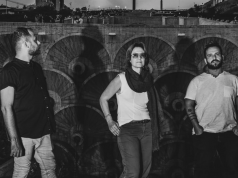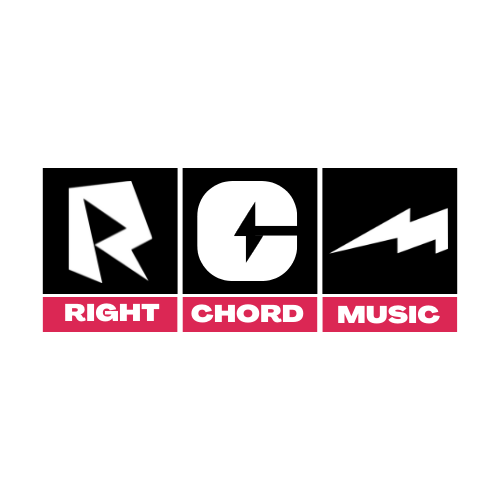Mark Knight, the founder of Right Chord Music provides an alternative guide to promoting unsigned bands on social media by borrowing marketing best practices from Disney.
Disney understands that a good story is always a good story. They also understand that once they have a good story, they have endless new audiences for that story. Disney ensures each new generation is exposed to the story.
“We have no new story to promote”
Last weekend, I was speaking to a music manager who was bemoaning his band’s lack of new music. “We have no new story to promote,” he said. The band in question have 19 tracks on Spotify and a host of video content. It got me thinking, what can we learn from Disney about how to promote unsigned bands.
Take Cinderella for example. The film was originally released in theatres on February 15th, 1950 it was subsequently re-released in theatres no fewer than five times in 1957, 1965, 1973, 1981 and 1987. Then with the growth of in-home media consumption Cinderella was released again. On VHS video and Laserdisc in 1988 as part of the Walt Disney Classics collection. In 1995 the film received a Walt Disney Masterpiece Collection video re-issue. Then in 1997, the film was re-released for DVD, Disney then remastered the movie in 2005 for the 6th edition of its Platinum Editions series. (Disney sold 3.2m copies in its first week and earned over $64m in sales). There is more…
In the UK a ‘Royal Edition’ of Cinderella was released on DVD in April, 2011 to coincide with the wedding of Prince William and Kate Middleton. Then in October 2012 a 3 disc Blu-ray was released, and a 1 disc DVD edition was released on November 20, 2012. It goes on and on….
What Disney is doing is pretty simple. They just keep on retelling the same story to every new generation of audience, using the latest distribution channel, while looking to align their story to relevant cultural moments.
The traditional way to promote music doesn’t work for unsigned bands
If you ever tried to release music to the industry (radio, magazines, and blogs) you will know that unless it’s new, they won’t play it or even listen to it. They won’t even support new music that came out two weeks ago! The traditional music industry distribution channels demand to hear about new music 8-10 weeks ahead of its launch. Once the launch date has passed the music industry, in all their infinite wisdom are unlikely to touch it, support it or play it.
So you spend a year, writing, recording, mixing and mastering your album and then because it wasn’t promoted with a long enough lead time, nobody will ever listen to it. How heart-breaking is that! Even if you do send it to them with sufficient lead times, you are still overlooked by radio, and press who largely only support major label signed artists.
Following traditional promotional channels, you are told you have one shot, and for most unsigned artists that one shot means an expensive and ineffective push to radio and press who ignore it anyway. After this time, that track is deemed old and useless. It sits disregarded on a shelf, on a CD at a gig, or as part of an album on a streaming service. How miserable and wasteful.
The new way to promote unsigned bands is direct to fans
The good news is the way people consume music has changed, and the traditional music industry media distribution channels are declining in importance and relevance for unsigned bands and independent artists. Today we have direct to consumer channels, and we don’t have to play by the archaic rules of the old music media world.
The shift from new music to new to me
Spotify allows fans to listen to whatever they want, whenever they want. Spotify has also inadvertently destroyed the concept of new music, but combining new music with old music on their playlists.
New on Spotify simply means ‘new to me’ with Spotify curated playlists containing music by theme, not by release date. On the playlists we analysed we found newly released tracks alongside tracks that span an 11-year release date period. For most listeners, it’s all-new music, because it’s the first time they have heard it. When was the last time you heard a track on Spotify that you liked and then Googled it to check when it was released?
Nobody cares about release dates. The music industry’s obsession with the next new single and release date is out of step with how fans consume music online.
How the Disney model can be applied to promoting unsigned bands on social media
As a new band or artist on Facebook, Instagram, Twitter et al you have new fans finding you each week. Most fans arrive in response to one thing: EG The one gig they attended, the one YouTube video they saw, the one track they found on Spotify. This means you have a lot more to share with them.
If your band released their first single, EP, or album 5 years ago, how many of the new fans that have followed you this week have heard it? We suspect very, very few.
“Forget the music industry as an audience, and focus on your fan audience. Until all your fans have heard all your previous tracks and watched all your previous videos, you have so much left to do.”
Being more Disney starts with the creation of content
Start by creating assets for every track you’ve ever released. It doesn’t have to be expensive, these assets could include:
- Musical score of the track, so your fans can play along at home
- Printed lyrics of the track
- Limited-edition live mp3 give away of the track
- Limited-edition vinyl of the track
- Spotify playlist featuring the track, plus other favourites that inspired its creation
- Audio track: On Spotify embedded as a player direct from social media
- Artwork for / inspired by the song
- Story of the song (written interview)
- Story of the song (video interview)
- Behind the scenes making of the music video
- Lyric video
- Official music video
- Dance remix
- Alternative acoustic version
- Unreleased instrumental
Create a content calendar and use scheduling services to automate your distribution
There is a common misperception that to use social media, you always need to be on it. What if you set aside two hours every Sunday to plan posts for a week. Use services like Tweetdeck, Later, or Facebook itself to schedule posts to avoid the daily slog.
Either focus on one track at a time or mix them up throughout the same week. If fans don’t like one track or one video, there is always something new to discover. They might not love the audio, but love the lyrics, the remix or the acoustic version. Use Spotify as a sign off for all pieces of content. EG “Discover this track and more of our music on Spotify” this ensures you maximise revenue-generating opportunities.
If you have two albums and two EPs already released, that means 15 tracks or potential for 450 different pieces of content to post on social media. Suddenly you have almost a year’s worth of Facebook posts all ready to go. Once you get to the end start again. Remember new fans are always joining midway through the cycle.
“It’s like painting the Golden Gate Bridge, the job is never complete, and you are always adding new tracks and content to each cycle.”
Give your fans the chance to discover all your music. Make all of your tracks work for you, imagine the additional income if your fans listened to three more tracks on Spotify each week.
Unsigned bands and independent artists, it’s time to start thinking like a Disney marketer, don’t promote your new single and stop, promote and continue to tell the story of your entire back catalogue. Make the most of social media and Spotify, think like Disney.
Words Mark Knight, Founder of Right Chord Music
Further reading, help and support
Visit Major Labl our management and marketing services division. Read more of our music marketing thought pieces.








